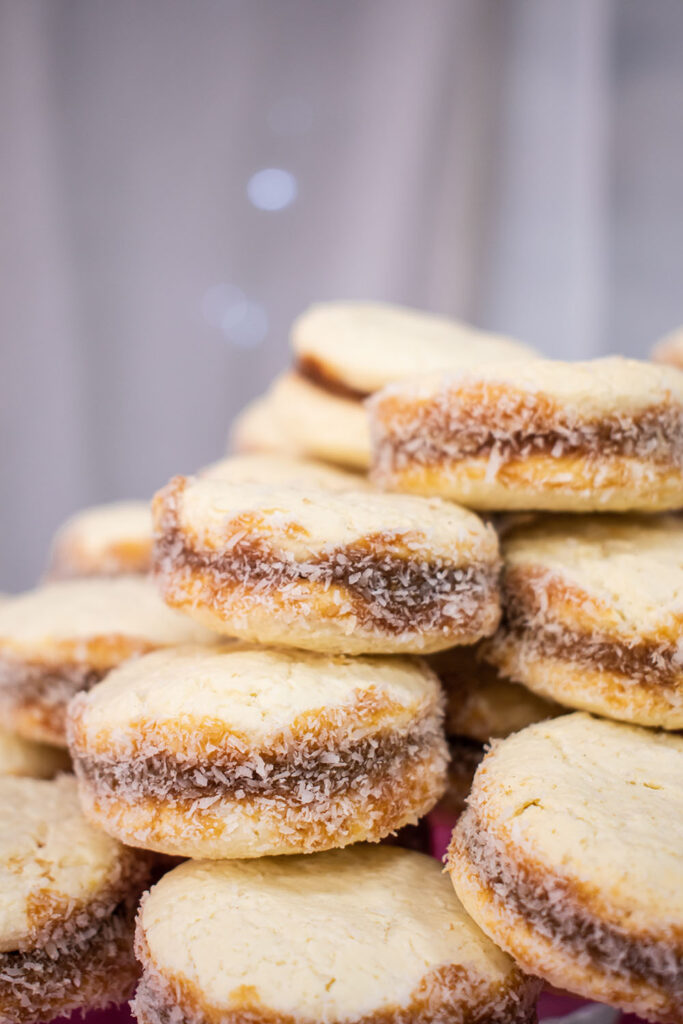It’s easy to confuse cornstarch and baking powder. Both are white, powdery, and staple ingredients in many recipes, but are they really as similar as they appear?

It’s a common mix-up in kitchens everywhere. Read on to discover the key differences between cornstarch and baking powder and when to use each.
What is Cornstarch?

Have you ever wondered what makes your favorite pie fillings so lusciously thick and your cookies so tender? The answer often lies in a white, powdery substance known as cornstarch.
It is a fine, white powder extracted from the starchy part of a corn kernel. To make it, people need to soak corn kernels, remove the outer hull, and then grind the endosperm into fine powder. It’s silky to the touch and can absorb and thicken liquids pretty well.
In the art of baking, cornstarch is the ultimate texture enhancer. When you add it to a mixture and heat it, it starts to absorb the liquid and swell up. This thickening action gives my pie fillings and sauces the consistency I always love.
But its role doesn’t end there. It can soften the harsh proteins in flour, giving your cakes, cookies, and shortbreads a tender, more delicate texture.
I still remember the first time I experimented with adding cornstarch to my cookie dough in the bakery. The cookies came out so wonderfully soft that they just melted in the mouth!
What is Baking Powder?

Baking powder often takes center stage when it comes to perfect rise and fluffy texture. It’s a blend of sodium bicarbonate (baking soda), an acid (often the cream of tartar), and a moisture absorber like cornstarch.
The beauty of baking powder lies in its ability to produce carbon dioxide gas when heated or wet. This is a double reaction – first at room temperature and then in the oven. Together, they cause the batter or dough to rise quickly.
It’s really a fascinating thing to watch if you’re new to baking. I’ve lost count of how many times I’ve peeked into the oven at my bakery, watching cakes and muffins puff up as if by magic.
Is Baking Powder and Cornstarch the Same?
These two might share shelf space in your pantry, but their roles in baking are worlds apart. One is a thickening agent, while the other is a leavening agent.
Cornstarch is all about texture and thickness. Its primary role is to thicken sauces, gravies, and pie fillings. This is why your fruit pies have that beautifully thick, saucy filling that doesn’t just run off your plate.
You’ll find cornstarch in a variety of recipes. I often use it with flour to create tender cakes and delicate cookies. This little trick has been a lifesaver for me so many times.
Meanwhile, baking powder is king when you need to give a lift to your baked goods. Unlike cornstarch, it doesn’t affect the thickness or stability of mixtures. Its sole purpose is to create volume and lighten the texture.
In my experience, this ingredient is a real lifesaver when you’re short on time but still want to whip up something that’s both delicious and impressively risen.
Using Cornstarch and Baking Powder Interchangeably
Let’s cut to the chase. Cornstarch is not baking powder, and you shouldn’t use cornstarch instead of baking powder or vice versa because they react differently and serve distinct roles.
However, there’s a little more to this story, especially when making your own baking powder.
Interestingly, cornstarch can be a component of homemade baking powder. If there’s baking soda and cream of tartar in your pantry as well, you’re in luck. You can actually create a substitute that’s pretty close to what you’d buy off the shelf.
To make your own baking powder, you’ll need:
- 2 cups cream of tartar
- 1 cup baking soda
- 1 cup cornstarch
In a small bowl, whisk all together thoroughly so the mixture is well blended. Simply measure out the amount of powder the recipe calls for. You can store the rest inside an airtight container or jar with a lid in a cool, dry place.

I’ve done this in a pinch a few times, and it works like a charm. Just make sure to blend them well. This homemade version will help your cakes and cookies rise beautifully, just like store-bought products.
Now, going the other way is a no-go. Even though baking powder does contain cornstarch, it also includes other ingredients that can affect the taste of your dish. If you try using it as a thickener, you might end up with a slightly sour or bitter taste in your sauces or fillings.
You might also like:
Frequently Asked Questions
What Makes Chicken Crispy: Cornstarch or Baking Powder?
Both can! Cornstarch creates a dry coating that crisps up beautifully when fried. Baking powder can also add some lift and a light crunch, especially when mixed with cornstarch.
What Can Be Substituted for Cornstarch in a Recipe?
Rice flour, arrowroot powder, or potato starch can all thicken liquids in a similar way. But they might have slightly different textures, so you must adjust the amount.
Conclusion
As we’ve seen, cornstarch and baking powder are not the same, working in very different ways to impact the foods we bake. With both of them in your arsenal, you can thicken and leaven for various recipes. But most importantly, remember to know when each one works best. Let me know in the comments if you have any other questions or tips for using these pantry staples!







